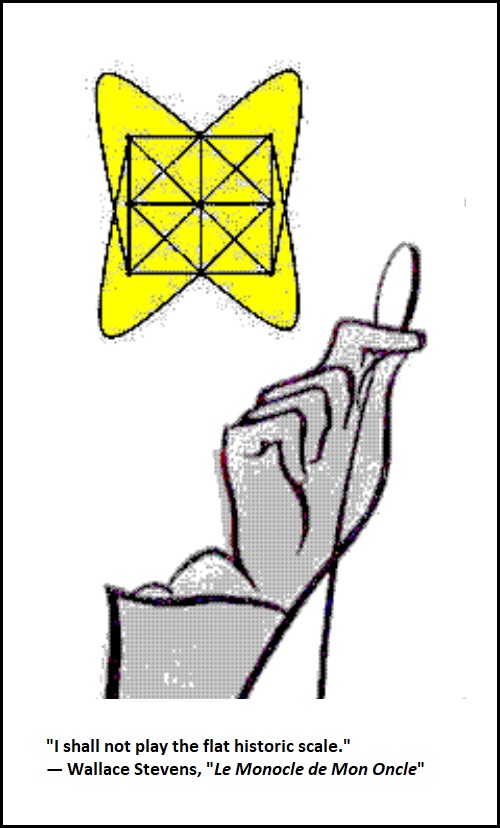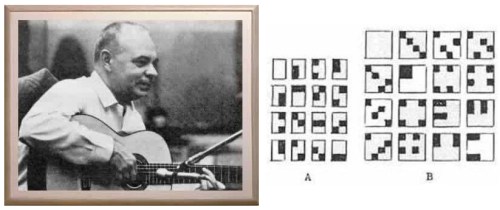From an Instagram story captioned "An Actor Prepares" —
Related logline for "I Am Not Okay with This" fans . . .
From an Instagram story captioned "An Actor Prepares" —
Related logline for "I Am Not Okay with This" fans . . .
David Brooks's column today quotes Niebuhr. From the same source—
Reinhold Niebuhr, The Irony of American History—
Chapter 8: The Significance of Irony
Any interpretation of historical patterns and configurations raises the question whether the patterns, which the observer discerns, are "objectively" true or are imposed upon the vast stuff of history by his imagination. History might be likened to the confusion of spots on the cards used by psychiatrists in a Rorschach test. The patient is asked to report what he sees in these spots; and he may claim to find the outlines of an elephant, butterfly or frog. The psychiatrist draws conclusions from these judgments about the state of the patient’s imagination rather than about the actual configuration of spots on the card. Are historical patterns equally subjective?
….
The Biblical view of human nature and destiny moves within the framework of irony with remarkable consistency. Adam and Eve are expelled from the Garden of Eden because the first pair allowed "the serpent" to insinuate that, if only they would defy the limits which God had set even for his most unique creature, man, they would be like God. All subsequent human actions are infected with a pretentious denial of human limits. But the actions of those who are particularly wise or mighty or righteous fall under special condemnation. The builders of the Tower of Babel are scattered by a confusion of tongues because they sought to build a tower which would reach into the heavens.
Niebuhr's ironic butterfly may be seen in the context of last
Tuesday's post Shining and of last Saturday's noon post True Grid—

The "butterfly" in the above picture is a diagram showing the 12 lines* of the Hesse configuration from True Grid.
It is also a reference to James Hillman's classical image (see Shining) of the psyche, or soul, as a butterfly.
Fanciful, yes, but this is in exact accordance with Hillman's remarks on the soul (as opposed to the spirit— see Tuesday evening's post).
The 12-line butterfly figure may be viewed as related to the discussions of archetypes and universals in Hillman's Re-Visioning Psychology and in Charles Williams's The Place of the Lion . It is a figure intended here to suggest philosophy, not entertainment.
Niebuhr and Williams, if not the more secular Hillman, might agree that those who value entertainment above all else may look forward to a future in Hell (or, if they are lucky, Purgatory). Perhaps such a future might include a medley of Bob Lind's "Elusive Butterfly" and Iron Butterfly's "In-a-Gadda-da-Vida."
* Three horizontal, three vertical, two diagonal, and four arc-shaped.
The artist Jennifer Bartlett reportedly died at 81 on July 25.
An image excerpted from Log24 posts that were tagged
"Butterfly Song" on that date, with an added quotation from
a 1918 poem by Wallace Stevens —

Modernism, Fiction and Mathematics
by Nina Engelhardt
(Edinburgh Critical Studies in Modernist Culture)
From a review by Johann A. Makowsky in
Notices of the American Mathematical Society,
November 2020, pp. 1589-1595 —
"Engelhardt’s goal in this study is to put the interplay
between fiction and mathematical conceptualizations
of the world into its historical context. She sees her work
as a beginning for further studies on the role of mathematics,
not only modern, in fiction in the wider field of literature and
science. It is fair to say that in her book Nina Engelhardt does
succeed in giving us an inspiring tour d’horizon of this interplay."
Another such tour —

On the title of Westworld Season 4 Episode 5, "Zhuangzi" —

A song for Teddy: "Across my dreams, with nets of wonder . . ."
See Zhuangzi also in the 2022 Black Rock CIty manifesto, "Waking Dreams" . . .
A Harvard student* attempts to summarize Nabokov’s aesthetics —
“Take ‘Pale Fire,’ his 1962 poem-as-novel
bursting with butterfly as theme:
‘I can do what only a true artist can do —
pounce upon the forgotten butterfly of revelation …
see the web of the world,
and the warp and the weft of that web.’ “
“True artist” here refers to Kinbote, not Nabokov.
* Tessa K.J. Haining, Harvard Crimson Contributing Opinion Writer.
Tessa K.J. Haining ’23 lives in Adams House. Her column appears on
alternate Fridays. December 11, 2020.

For Princess Leia, from donshewey.com—
REVISITING ‘THE LADY FROM DUBUQUE’
| Origin of the title: Harold Ross, founding editor of The New Yorker, was once asked to describe the average reader of the magazine. He said, “One thing I know, the magazine is not going to be written for the little old lady from Dubuque.” Naming his character after Ross’s imaginary small-town creature was typically whimsical of Albee. The play’s title character is extremely worldly and other-worldly at the same time. “If The New Yorker is written for anyone, it’s written for her,” Albee said. |
Related material: Butterfly in this journal.
| BOOKS OF THE TIMES
HOW IT ALL BEGAN Review by Michiko Kakutani As a historian, Henry acknowledges that he has “a soft spot for what is known as the Cleopatra’s nose theory of history— the proposal that had the nose of Cleopatra been an inch longer, the fortunes of Rome would have been different.” It’s a bit of a reductio ad absurdum, he admits, but nonetheless “a reference to random causality that makes a lot of sense when we think about the erratic sequence of events that we call history.” What Ms. Lively has done in this captivating volume is to use all her copious storytelling gifts to show how a similar kind of random causality rules individual lives, how one unlucky event can set off unexpected chain reactions, how the so-called butterfly effect— whereby the flapping of a tiny butterfly’s wings can supposedly lead to a huge storm elsewhere in the world— ripples through the ebb and flow of daily life. |
Rhetorical question—
"Why walk when you can fly?"
— Mary Chapin Carpenter
Rhetorical answer—
Two excerpts from a webpage on random walks—
A drunk man will find his way home,
but a drunk bird may get lost forever.

Post 2310 in yesterday evening’s Short Story links to two posts
from 2006 inspired by Oxford mathematician Marcus du Sautoy—
|
Thursday, May 25, 2006
|
The first paragraph of
“Zeta Functions of Groups: The Quest for Order
Versus the Flight from Ennui,” by Marcus du Sautoy,
Mathematical Institute, University of Oxford—
“Mathematics is about the search for patterns,
to see order where others see chaos. We are very lucky
to find ourselves studying a subject which is neither so rigid
that the patterns are easy, yet not too complicated
lest our brains fail to master its complexities.
John Cawelti sums up this interplay perfectly in a book*
not about mathematics but about mystery and romance:
‘if we seek order and security, the result is likely to be
boredom and sameness. But rejecting order for the sake
of change and novelty brings danger and uncertainty…
the history of culture can be interpreted as a dynamic
tension between these two basic impulses…
between the quest for order and the flight from ennui.”’
* John G. Cawelti, Adventure, Mystery, and Romance:
Formula Stories as Art and Popular Culture ,
University of Chicago Press, 1976.
[Cawelti cites as his souce on interpreting “the history
of culture” Harry Berger, Jr., “Naive Consciousness and
Culture Change: An Essay in Historical Structuralism,”
Bulletin of the Midwest Modern Language Association ,
Vol. 6, No. 1 (Spring 1973): page 35.]
Here du Sautoy paints mathematicians as seekers of order,
apparently not realizing that the author he approvingly quotes
states that seekers of order face the danger of boredom.
Another danger to seekers
of order is, of course, seeing
order where there is none.
For Yom Kippur


4. Image— Argument for the Existence of Rebecca
Some literary and cinematic background—

"Are you the butterfly… ?"
From Nabokov's The Gift —
Click for more about the Pushkin verse.
See also Trevanian + meadow and Congregated Light.
From a story about mathematician Emmy Noether and 1882, the year she was born—
"People were then slowly becoming 'modern'— fortunately they had finally discovered not just that there are no Easter bunnies and Santa Claus, but also that there probably never were women who were led to evil ways by their curiosity and ended up, depending on their level of education, as common witches, as 'wiccans,' or as those particularly mysterious 'benandanti.'"
"… in the Balkans people believe that the souls of the dead rise to heaven in the guise of butterflies."
— "The Fairytale of the Totally Symmetrical Butterfly," by Dietmar Dath, in Intoxicating Heights (Eichborn AG, Frankfurt 2003)
An insect perhaps more appropriate for the afternoon of Good Friday— the fly in the logo of Dath's publisher—

Related material— Holy Saturday of 2004 and Wittgenstein and the Fly Bottle.
(After clicking, scroll down to get past current post.)

|

|

Picture by Robert Vickrey.
Vickrey died Sunday.
See Sunday School.
Review of a 1968 novel by Wilfrid Sheed, who died today—
Sheed on his boyhood in My Life as a Fan: A Memoir —
"So it was back to… tinkering with my batting stance and praying that some one of my aged neighbors would miraculously rear back and give birth, like Sarah in the Bible, to a boy who would even more miraculously emerge at about my own age and not turn out to be a butterfly collector or other form of creep." (Simon & Schuster, 1993; in 2001 edition, page 84)
See also Shadow (September 23rd) —
"I was the shadow of the waxwing slain" — John Shade in Pale Fire , a novel by butterfly collector Vladimir Nabokov
—as well as Intermediate Cubism and Ironic Butterfly.
"This is called the transformation of things."
Today's birthdays:
Bob Lind, composer of "Elusive Butterfly," and General Augusto Pinochet.
Also today:
Stones tour rolls into Vancouver.
These events prompt fond memories of a Log24 entry from the Feast of the Transfiguration in 2002 and of more recent entries from this date last year– Buckley and Pinochet and Rehearsing Hell.
Perhaps the afterlife will include, for some, a Mick Jagger rendition of the Lind tune (along with the Percy Faith rendition of "Satisfaction" mentioned in The Last Samurai.)

From eudaemonist.com,
a quotation from
Paul Zanker's
The Mask of Socrates:
Benjamin was a Jewish Marxist. For a Jewish perspective on spelling, see Log24, Nov. 11, 2005. For a leftist perspective on Benjamin and last night's crucial spelling word "Ursprache," see "Ground Zero, an American Origin," by Mary Caputi (Poroi, 2, 1, August 2003):
The Baroque sensibility of ruin emphasizes a meaninglessness that too many possibilities deliver. Aimlessness and malaise make life into exhausting toil in the absence of coherence. In overdetermined realities, meaning appears arbitrary and erratic, as the world's connection to God seems lost or withheld. At the extreme, everyday life is as full of noise and commotion as it is devoid of intrinsic meaning. Connections among people wither with the onset of overabundance and despair. Recognition of this condition induces acedia, a weariness of life. Here the malaise of modernity and ruins ties to Benjamin's interest in Trauerspiel, German tragic drama, and the tragedies of Shakespeare. All respond to a plague of lost spiritual connections and a meaningless earthly existence where incessant toil and trouble — "tomorrow and tomorrow and tomorrow" — contribute to a chronic, wearing sense of pain.
Benjamin's interest in this form of melancholia, from suffering a sort of spiritual exile, is evident in his 1916 essay "On Language as Such and On the Language of Man." In this text, he explains that the Ursprache, our "original" language, is "blissful" precisely because it lacks the arbitrariness that results from overdetermination. Ur-speech is Adamic language, the linguistic power that God gives to Adam to confer identity on the material world. It contains no arbitrary component, but reveals the unity between God's divine plan and the world as it exists. Before ruins and fragments, there is no overdetermination to induce the melancholy of acedia. Instead the originary language implies a unity of transcendent and immanent realms. "With the creative omnipotence of language it begins, and at the end of language, as it were, assimilates the created, names it. Language is therefore both the creative and the finished creation; it is word and nature."6
This blissful state between the world and its creator as expressed in Adamic language has its end, of course, in the Fall. The "ignorance" introduced into the world that ultimately drives our melancholic state of acedia has its inception with the Fall away from the edenic union that joins God's plan to the immediacy of the material world. What ensues, says Benjamin, is an overabundance of conventional languages, a prattle of meanings now localized hence arbitrary. A former connection to a defining origin has been lost; and an overdetermined, plethoric state of melancholia forms. Over-determination stems from over-naming. "Things have no proper names except in God. . . . In the language of men, however, they are overnamed." Overnaming becomes "the linguistic being of melancholy."7
6 Walter Benjamin, "On Language as Such and On the Languages of Man," Edmund Jephcott, tr., Walter Benjamin, Selected Writings, Volume I: 1913-1926, Marcus Bullock and Michael W. Jennings, eds., Cambridge, MA, Harvard University Press, 1997, p. 68. 7 Ibid., p. 73.
For a Christian perspective on Adamic language, see Charles Williams's The Place of the Lion.
Float like a butterfly,
sting like a
“Float like a butterfly,
sting like a bee.”
— Muhammad Ali
Related material:
Log24 on the
Feast of the Transfiguration
(Aug. 6, 2002) and
Bee Season
(Nov. 12, 2005,
with the four entries
that preceded it).
See also
Spelling Champ
Masters “Ursprache.”

John Fowles on two of his novels:
“I wanted to show the seeds of an intense future evolution in a particular period.”
Ray Bradbury, “A Sound of Thunder” (1952), on the death of a butterfly:
“It fell to the floor, an exquisite thing, a small thing that could upset balances and knock down a line of small dominoes and then big dominoes and then gigantic dominoes, all down the years across Time.”
“Once Zhuang Zhou dreamt he was a butterfly, a butterfly flitting and fluttering around, happy with himself and doing as he pleased. He didn’t know he was Zhuang Zhou. Suddenly he woke up and there he was, solid and unmistakable Zhuang Zhou. But he didn’t know if he was Zhuang Zhou who had dreamt he was a butterfly, or a butterfly dreaming he was Zhuang Zhou. Between Zhuang Zhou and a butterfly there must be some distinction! This is called the Transformation of Things.”
Related material:
taken from fowlesbooks.com,
suggests more links:
1. To Butterflies and Wheels* (banner below),

a site that attacks Mary Midgley, and
2. To an AAAS site offering Midgley’s
| Evolution as a Religion: A Comparison of Prophecies |
I personally prefer Midgley,
an Oxford-trained philosopher
also known as
Mary, Mary, Quite Contrary.
Related material:
a meditation on the phrase
“crucified on the wheel of time.”
* “Who breaks a Butterfly upon a Wheel?”
— Alexander Pope
From a review of On the Composition of Images, Signs & Ideas, by Giordano Bruno:
|
Proteus in the House of Mnemosyne (which is the fifth chapter of the Third Book) relies entirely on familiarity with Vergil’s Aeneid (even when the text shifts from verse to prose). The statement, “Proteus is, absolutely, that one and the same subject matter which is transformable into all images and resemblances, by means of which we can immediately and continually constitute order, resume and explain everything,” reads less clear than the immediate analogy, “Just as from one and the same wax we awaken all shapes and images of sensate things, which become thereafter the signs of all things that are intelligible.” |
From an interview with Vladimir Nabokov published in Wisconsin Studies in Contemporary Literature, vol. VIII, no. 2, Spring 1967:
|
When I was your student, you never mentioned the Homeric parallels in discussing Joyce’s Ulysses But you did supply “special information” in introducing many of the masterpieces: a map of Dublin for Ulysses…. Would you be able to suggest some equivalent for your own readers? Joyce himself very soon realized with dismay that the harping on those essentially easy and vulgar “Homeric parallelisms” would only distract one’s attention from the real beauty of his book. He soon dropped these pretentious chapter titles which already were “explaining” the book to non-readers. In my lectures I tried to give factual data only. A map of three country estates with a winding river and a figure of the butterfly Parnassius mnemosyne for a cartographic cherub will be the endpaper in my revised edition of Speak, Memory. |
Practice, Man, Practice
|
Andrew Carnegie |
Born today: Born yesterday or today, depending on |
This site’s background music has been changed,
for the time being, to honor Patti LaBelle’s performances
at Carnegie Hall.
In honor of
Pope Callistus III, and
all of whom died on this date:
A lavender love butterfly vignette…
If you remember something there
That glided past you,
Followed close by heavy breathing,
Don't be concerned. It will not harm you;
It's only me, pursuing something
I'm not sure of.
and a
But seriously…
A few words in memory of a great mathematician, André Weil, who died on August 6, 1998:
"I wonder if it is because to-night my soul has really died that I feel at the moment something like peace. Or is it because right through hell there is a path, as Blake well knew, and though I may not take it, sometimes lately in dreams I have been able to see it?"
— Malcolm Lowry, 1947, Under the Volcano
There is a link on the Grand Finale site above to a site on British Columbia, which to Lowry symbolized heaven on earth. See also my website Shining Forth, the title of which is not unrelated to the August 6, 1993 encyclical of Pope John Paul II.
August 6: Feast of the Metamorphosis
Adapted from Brief Exhortations:
Geneva Bible:
Romans 12:2 2 And be not conformed to this world: but be ye transformed [metamorphosized] by the renewing of your f mind, that ye may prove what [is] that good, and acceptable, and perfect, will of God.
The word “transformed” is from the Greek word ” metamorphe,” (to transform or change) and is found only in the above verse, in Matthew 17:2 …
Geneva Bible:
Matthew 17:2 And was b transfigured [metamorphosized] before them: and his face did shine as the sun, and his raiment was white as the light.
and in Mark 9:2 …
Geneva Bible:
Mark 9:2 1 And after six days Jesus taketh [with him] Peter, and James, and John, and leadeth them up into an high mountain apart by themselves: and he was transfigured [metamorphosized] before them.
where it is used of the transfiguration of Jesus. It is used in biology with reference to the change of the worm to the butterfly.
Note by S. H. Cullinane, August 6, 2002:
For more on the Geneva (Shakespeare’s) Bible, see Michael Brown’s Introduction.
Powered by WordPress